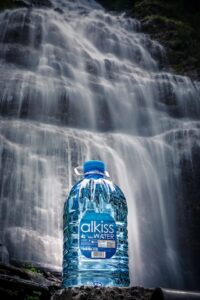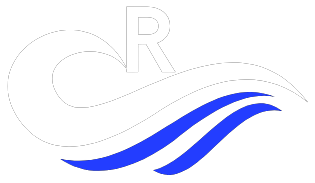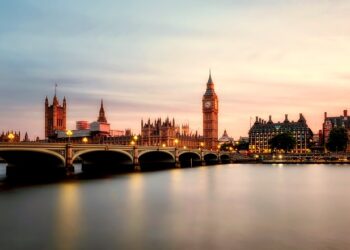Why Do Airports not Allow Water
Airports are bustling hubs of travel, where people from all walks of life converge, each with their own hopes, dreams, and, quite often, a common frustration: the seemingly absurd ban on carrying water past the security checkpoint. In a world where hydration is paramount and air travel can be tiring, prohibiting something as essential as water raises eyebrows. Why is it that, during a long journey, you’re not allowed to bring along a bottle of nature’s elixir?
This blog delves into the intriguing reasons behind the ban on carrying water through airport security. While it might appear deranged to restrict such a basic necessity, you’ll discover that this protocol is undeniably crucial in ensuring the safety of all passengers. Join us as we unravel the mysteries behind this common traveler’s conundrum.
The Crucial Reasoning: Why Water is Prohibited?

Have you ever wondered why something as innocuous as water is forbidden beyond the airport security checkpoint? The answer lies in the paramount importance of ensuring passenger safety during air travel.
1. The Deceptive Nature of Liquid Explosives
The primary reason for banning water is the unsettling fact that certain explosive chemical liquids, like nitroglycerine, bear an uncanny resemblance to water when examined visually.
These clear, colorless liquids are virtually indistinguishable from water at a glance and pose a significant security risk. What makes matters worse is that the standard security X-ray scanners commonly used at airports cannot detect these potentially dangerous substances.
Imagine the consequences if these apparent, liquid explosives were allowed on board aircraft. They could function just like regular explosives, posing a grave threat to the safety of airliners and everyone on board.
2. Safeguarding Passenger Lives
This critical aspect of passenger safety drives the seemingly stringent prohibition on carrying water past airport security. While it may inconvenience travelers, it ultimately serves as a protective measure to thwart potential threats that could compromise air travel safety.
Why do airports not allow water bottles?
Airports do allow passengers to carry water bottles. Still, specific rules and regulations are in place to ensure security and safety. Concerns about potential threats to aviation primarily drive these regulations. Here’s why airports have restrictions on water bottles:
Security Concerns: One of the top priorities for airport authorities is the safety of passengers and aircraft. Some explosive chemicals, such as nitroglycerine, have properties that make them visually indistinguishable from water. These clear, colorless liquids can pose a significant security risk if brought on board an aircraft.
Detection Challenges: Standard security X-ray scanners used at airports cannot easily distinguish between harmless liquids like water and potentially dangerous substances. This makes it difficult to effectively identify and screen every liquid brought onto an aircraft.
Historical Incidents: The restrictions on liquids, including water bottles, stem from past incidents and threats to aviation security. For example, after the 9/11 attacks, security officials became even more vigilant about addressing potential vulnerabilities in air travel. Incidents such as a terrorist attempting to use a water bottle to conceal liquid explosives in 2006 and the Philippines Airlines Flight 434 bombing in 1994, which involved liquid explosives, contributed to the adoption of stricter regulations.
To mitigate these concerns while accommodating the need for hydration during travel, airports and aviation authorities have implemented rules such as the “3-1-1 rule” in the United States.
This rule allows passengers to carry small quantities of liquids, including water, in containers of up to 3.4 ounces (100 milliliters) each, placed in a quart-sized resealable bag. Frozen liquids are also generally allowed because they are considered solids while frozen.
What is the water rule at the airport?
The water rule at airports, often called the “3-1-1 rule,” is a set of guidelines and restrictions regarding the transportation of liquids through airport security. This rule is primarily enforced by the Transportation Security Administration (TSA) in the United States. It is similar to regulations in many other countries. Here’s what the “3-1-1 rule” entails:
- 3.4 Ounces (100 Milliliters) Limit: Passengers can carry liquids, including water, in containers with a maximum capacity of 3.4 ounces (100 milliliters) per container. These containers must fit comfortably in a quart-sized, clear, resealable plastic bag.
- One Quart-Sized Bag: Each passenger is typically allowed one quart-sized (approximately one liter) clear, resealable plastic bag. You must place all your containers with liquids in this bag for screening at the security checkpoint.
- One Bag Per Passenger: Each traveler must have their quart-sized bag for carrying liquids. This means that if you are traveling with family or a group, each member must have their bag for their liquid items.
- Liquid Exceptions: Certain liquids, such as medications, baby formula, and breast milk, are exempt from the 3.4-ounce limit but are subject to additional screening. You are generally required to declare these items to the security personnel at the checkpoint.
- Frozen Liquids: Frozen liquids, including water, are typically allowed through security because they are considered solids while frozen. However, they may undergo additional screening.
- Duty-Free Purchases: Liquids purchased at duty-free shops after the security checkpoint are generally allowed. Still, they should remain in their original, sealed tamper-evident bags with receipts. Rules may vary depending on your destination.
Conclusion
In modern air travel, the airport’s rules and regulations can sometimes appear puzzling, and the ban on carrying water bottles is no exception. However, as we’ve explored, these rules are not arbitrary; they serve a vital purpose in safeguarding the security of passengers and aircraft.
The “3-1-1 rule,” which restricts the quantity of liquids that can be carried through airport security, manifests the aviation industry’s commitment to passenger safety. The ban on larger liquid containers, including water bottles, is rooted in the need to prevent the smuggling of potentially dangerous substances that can resemble harmless liquids, such as water.








